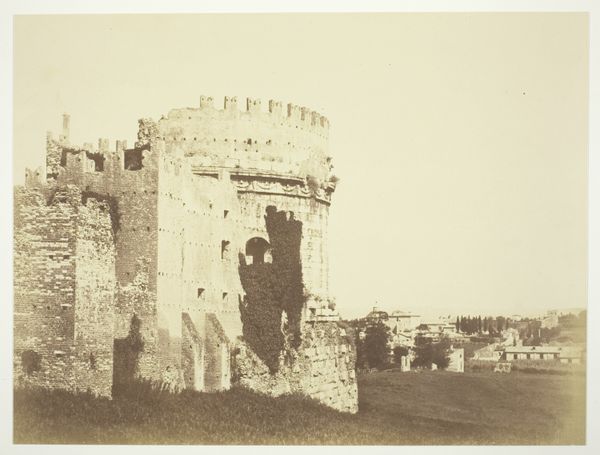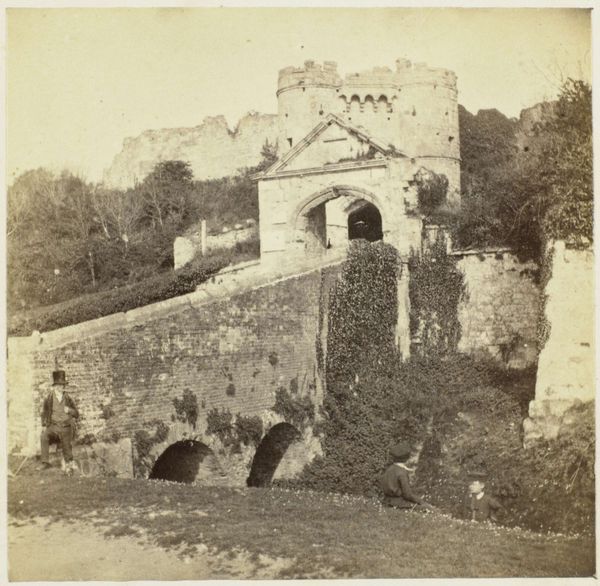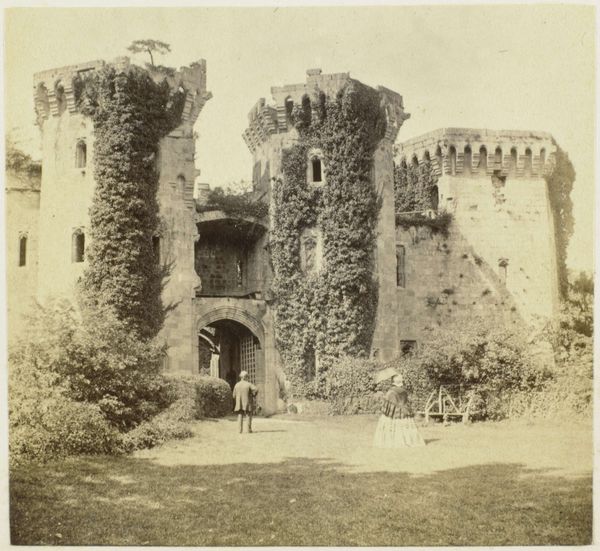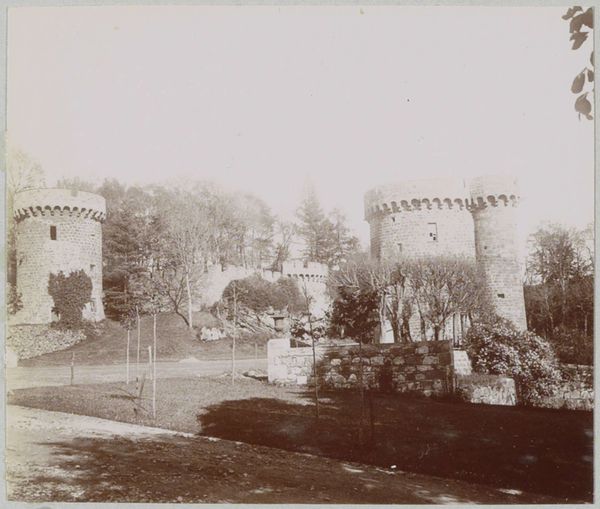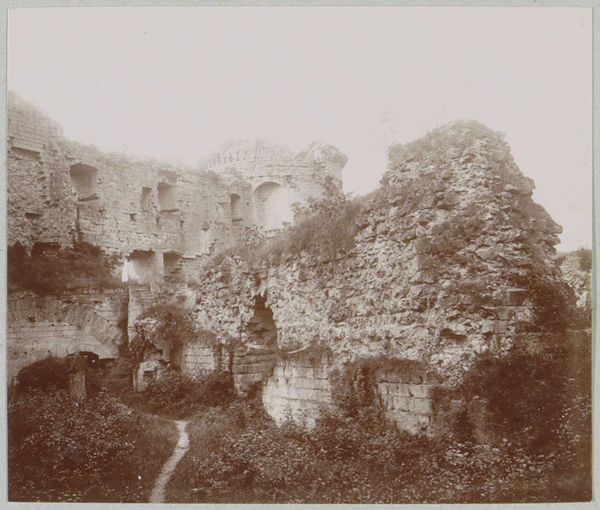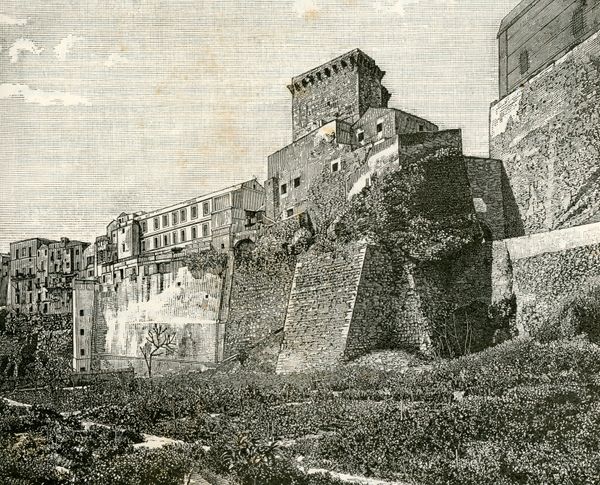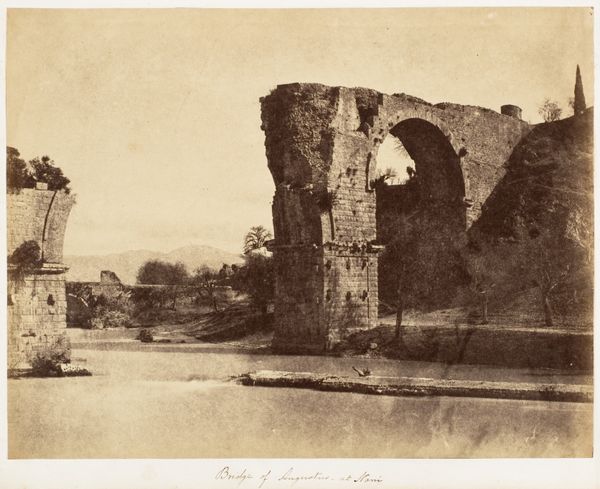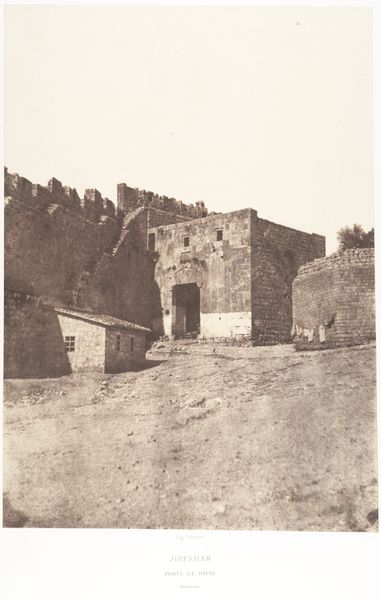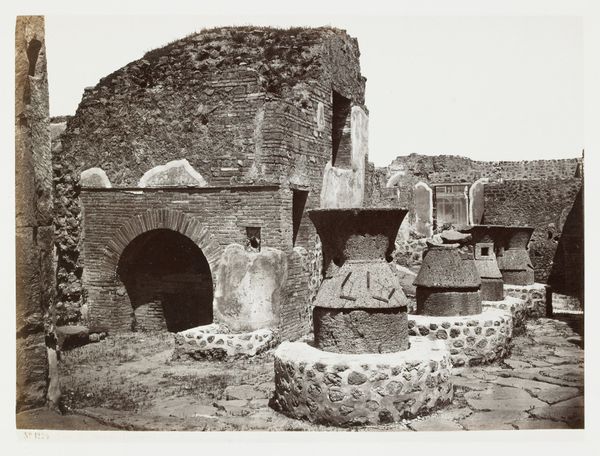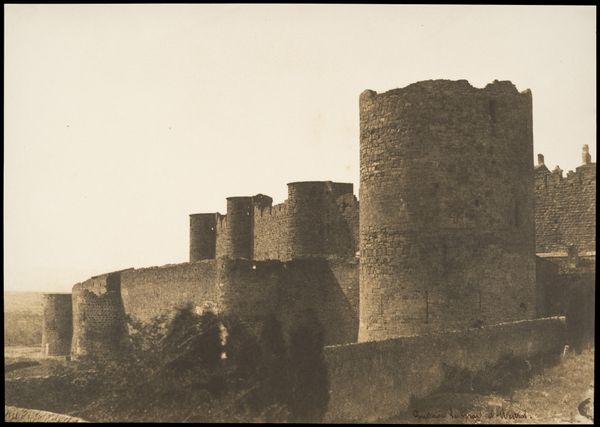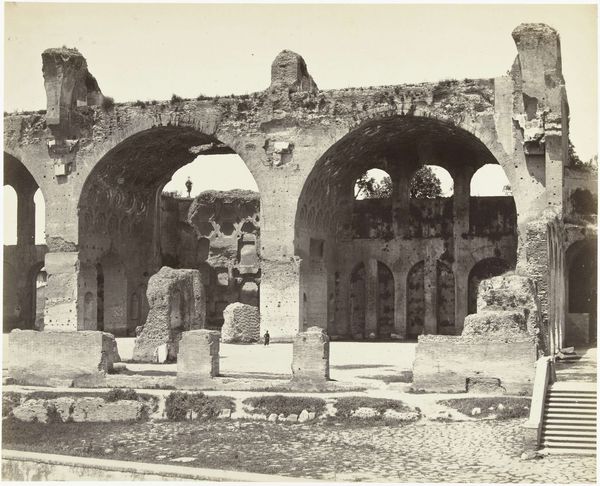
#
landscape illustration sketch
#
countryside
#
pencil sketch
#
incomplete sketchy
#
house
#
possibly oil pastel
#
watercolour illustration
#
scenic spot
#
imaginary surrealistic
#
mixed medium
#
watercolor
Dimensions: height 79 mm, width 110 mm
Copyright: Rijks Museum: Open Domain
Editor: So, here we have Delizy’s *View of the Ruins of Coucy Castle*, made somewhere between 1896 and 1899. Looking at the muted tones, and the ruin itself, I find the work somewhat melancholic. How do you interpret this depiction, especially considering the historical context? Curator: The ruin is key, isn't it? It wasn't just a romantic motif, but a deliberate act. The castle was dynamited by the German army in 1917 during World War I. Its destruction became a powerful symbol of barbarism and cultural loss in France. Delizy captures a specific moment when these ruins, pregnant with recent history, were sites of public mourning and national reflection. What kind of visual language evokes those feelings? Editor: I see that the composition, how the ruined castle dominates the frame, amplifies a feeling of loss. There’s an incompleteness in the style as well, an ambiguity. Would it be fair to say Delizy wanted viewers to consider France's vulnerability? Curator: Exactly. Notice the use of light, how it emphasizes the castle's shattered facade while casting shadows on the foreground. This chiaroscuro effect might subtly evoke a sense of unease and instability, mirroring the nation's psychological state after the act. Think about the intended audience; it prompts contemplation of both physical and emotional wreckage. Editor: So, more than just a landscape, this is a loaded symbol representing cultural destruction and a call for remembrance. This definitely changes my perspective. Thank you! Curator: And hopefully provides a deeper appreciation of how artists can engage with very raw national wounds.
Comments
No comments
Be the first to comment and join the conversation on the ultimate creative platform.
